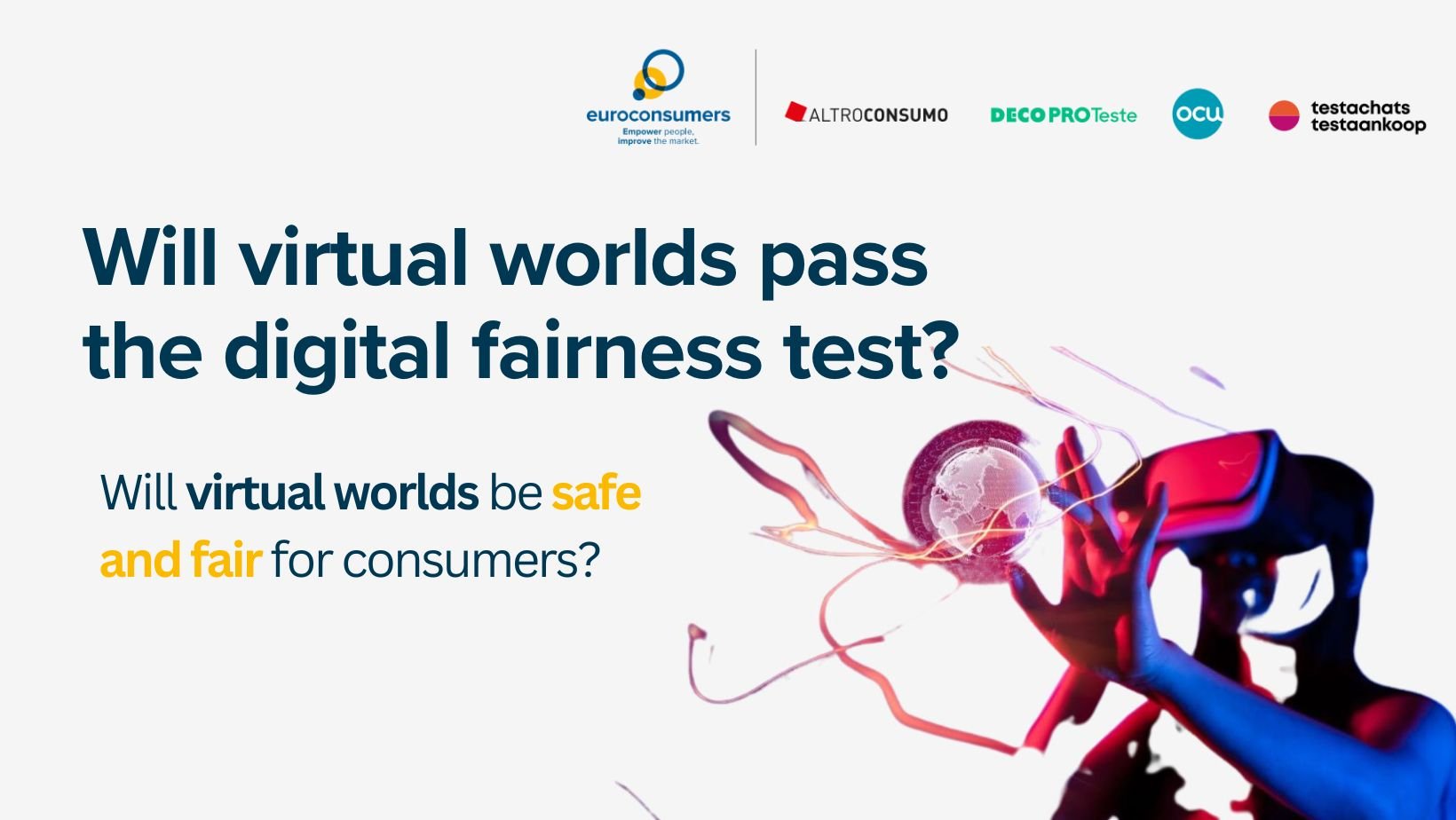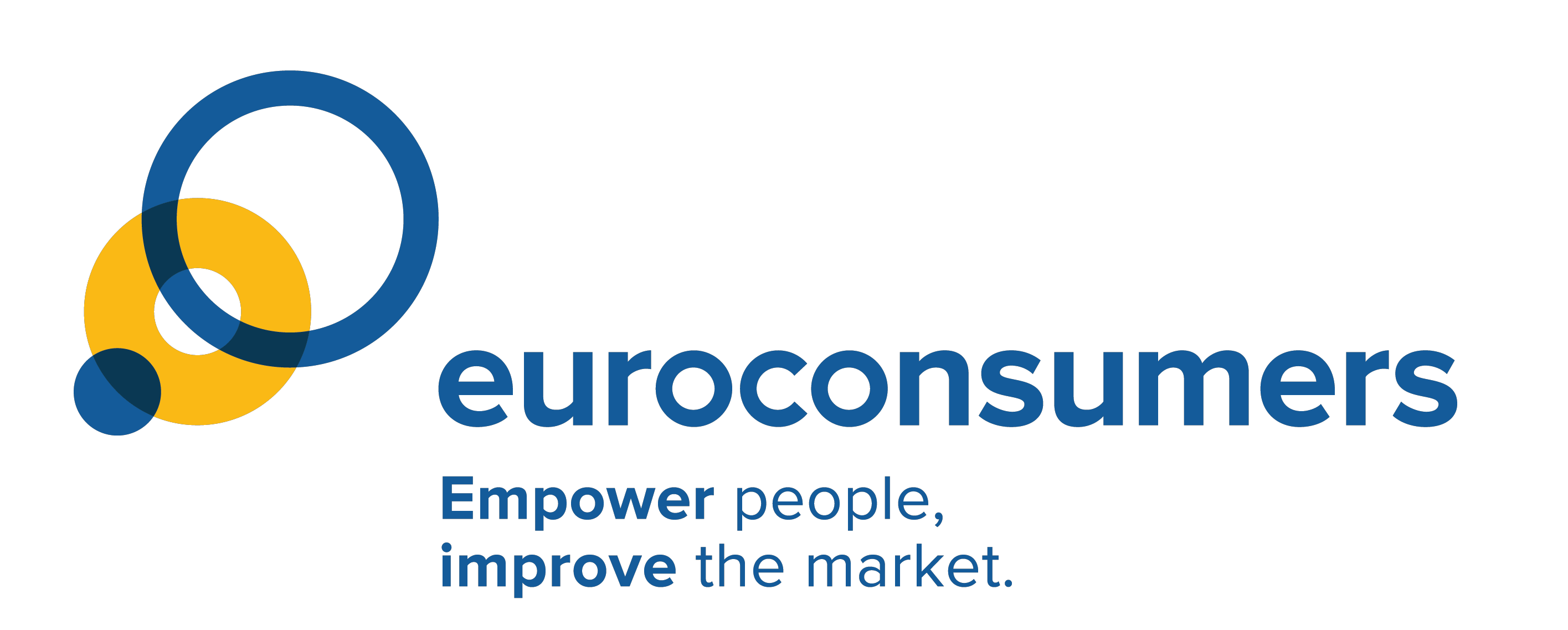This website uses cookies so that we can provide you with the best user experience possible. Cookie information is stored in your browser and performs functions such as recognising you when you return to our website and helping our team to understand which sections of the website you find most interesting and useful.
Will virtual worlds pass the digital fairness test?

The initiative was launched against the backdrop of the ongoing ‘digital fairness fitness check’ which is scrutinising key consumer legislation the Unfair Commercial Practices Directive, Consumer Rights Directive and Unfair Contract Terms Directive to see if it matches the specific challenges consumers face in digital markets.
With this review still ongoing, we also ask how confident we can be in the Commission’s assertion that the EU already has a robust legislative framework to manage risks in virtual worlds.
What are virtual worlds?
Virtual worlds is a broad term covering a host of applications from the addition of a digital layer to real life environments, to the complete 3D simulation of elements of the real, physical world. Key terms include:
- Virtual Reality / VR
Virtual reality or VR has been around for a while, most often associated with the headsets which can transport the wearer to a separate, immersive, three-dimensional experience of say a video game, a holiday destination, or a newly renovated home.
- Metaverse
Virtual reality got a huge injection of interest last year when Facebook renamed itself Meta to coincide with a major investment strategy in creating their ‘metaverse’. A metaverse is really just an interconnected network of virtual worlds, so for example, you (or rather your avatar) could move through a series of linked virtual zones run by different platforms, doing different tasks.
As well as the obvious fun for online gamers being able to move between different games, there are endless consumer use cases. For example, a consumer wanting to book a vacation could check out the resort in one platform, visit a travel agent to book a flight in another, and even apply for a visa in another.
Despite the excitement about the prospect of these metaverses- which was a hot discussion topic at a Euroconsumers Start Talking webinar ‘Making safety matter across the metaverse’ – we are still a long way from a functioning interconnected network of virtual worlds.
- Augmented Reality (AR)
While VR seeks to shut out the real world and create another one, AR or augmented reality aims to add to the physical world in which we live. The most obvious current examples are AR glasses which could project layers of information about someone’s immediate surroundings – for example the terrain or weather patterns for a hiker, or restaurant reviews and ratings for someone out and about in the city.
- Mixed Reality (MR)
As its name suggests, mixed reality or MR combines physical reality and digital layers so that the real world and virtual world can interact. A good example from industry could be a technician being trained to fix a car using a hologram of the engine which responds to gestures and voice commands. Mixed reality or extended reality use elements of augmented reality but push it further to blend physical and digital reality.
How will consumers experience virtual worlds?
Let’s be clear, all these different types of digital, virtual realities have the potential for positively enhancing our world. In music and entertainment, virtual worlds could bring people together who may not physically be able to connect.
Virtual experiences could open up convenient, easy access to services, they could allow consumers to really ‘try before they buy’ by getting as close as possible to the goods and services before they make a decision. Or there could be much smoother, more life-like interactions with AI-powered customer service agents.
While the mainstream use of virtual worlds may be some time off, some form of additional, immersive experience is an inevitable step on the digitalisation journey.
Will virtual worlds be safe and fair for consumers?
As recognised by the digital fairness fitness check process, digitalisation does bring particular challenges well as enormous opportunities and benefits. Fair treatment in a digital market goes beyond just protecting consumers’ economic interests and considers wider interests like empowerment, access to objective information and ability to make autonomous decisions.
The digital fairness fitness check will consider where consumers might need additional protection and rights for example, manipulative user design, personalisation practices, influencer marketing and the addictive use of digital products.
These challenges require a more cohesive regulatory and enforcement infrastructure so consumers know they will be safe and treated fairly.
It’s likely that virtual worlds will contain many of these familiar challenges for consumers, to what extent can they be addressed by an ambitious rethinking of existing consumer law?
- Data driven personalisation: as with most digital innovations, personal data will be fundamental in creating experiences in and between virtual worlds. Avatars in virtual worlds could be linked back to real life identities, adding to the already huge record of information about people’s purchases and behaviours.
- This data provides an unprecedented opportunity for advertisers to target consumers with evermore personalised offers. While the ever more relevant product recommendations and personalised offers may be positive developments, it does need to be managed carefully, as excessively curated products take away consumer’s ability to compare alternatives.
- Deceptive design patterns: deceptive design features are often built into user journeys to push or mislead people into making purchases, sharing more data than they intended or signing up to contracts. The most common types of these so-called ‘dark patterns’ are fake countdown timers, pre-selection options, as well as hidden filters which alter the options a consumer sees.. The Unfair Commercial Practices Directive should address the most commonly used dark patterns used in all digital environments including virtual worlds.
- Influencer Marketing: social media has given birth to a new form of marketing via well known online personalities with large followings endorsing or advertising products and services. Euroconsumers Start Talking webinar ‘Influencer Economy’ discussed the challenge of regulating this fast moving sector with influencers, the European Commission, national regulators and academics. Digital avatars in virtual worlds will become the new generation of influencers, and clear disclosure on how they work with businesses to promote products will be essential for transparency and consumer trust.
- Children: younger people will be drawn to the fun of interactive worlds, and could also experience learning in a much more engaging way. On the other side though, they may be especially vulnerable to risks in virtual worlds and metaverses. In the case of advertising, an official complaint has been filed against the provider of the video game ‘Roblox’ in the US for allowing to mix elements of games and advertisements in a way that sponsored and user-generated content was impossible to distinguish. Last year, the World Health Organisation warned that children spending more time in virtual worlds can be exposed to more advertisements for unhealthy foods and even alcohol. There’s also the risk of children interacting with adults posing as a child avatar. Euroconsumers Start Talking webinar dug into many of these safety issues in discussion with Roblox, the Family Online Safety Institute and AR visionary Louis Rosenberg.
- There are big questions on how mixed realities will impact on children’s mental health and development, as well as their safety. Children online are particularly vulnerable and they have additional rights to reflect this fact. To be as fair as possible to its younger users, virtual worlds must ensure the highest levels of safety, privacy and security.
- Competition: in the race to create the most popular virtual environment, we could see a land grab which reduces the choices consumers have about how to experience virtual worlds. The newly adopted Digital Markets Act recognises the entrenched advantages that the biggest data-asset holders have, and wants to encourage interoperability and easier data portability to ensure consumers can easily switch providers – these rights will be vital in virtual worlds so that consumers can enjoy experiences from new innovators.
- Competition can also be thwarted by unfair contract terms which lock consumers into particular services or ones that make exiting a contract very difficult. The digital fitness check is looking closely at options for simplifying contract management. The revision of consumer law can facilitate healthy and fair competition among players in the virtual worlds by making sure that consumers can easily unsubscribe from and cancel services
Refit for a fairer virtual world
Euroconsumers is eager for consumers to access virtual environments that open up a world of innovation and excitement for consumers.
Yet we know that virtual worlds will create a qualitatively different setting for consumers, and we must stay alert to the fact that advanced digital environments are likely to repeat and amplify the recognised challenges of the online world.
Many of the problems virtual worlds might bring along can be addressed by the refit of consumer law via the Digital Fairness check. While the revision of consumer protection legislation fit for the digital future progresses, the Commission should stay ambitious and focused on how to make virtual worlds safe, secure, fair and enjoyable for consumers.


